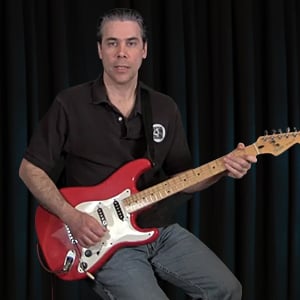Description
This tutorial covers the basics of chord theory: how chords consist of notes from scales played together, the origin of open and barre major and chord shapes. You'll also learn about chord voicings by using triads and inversions in order play any major or minor chord across the fretboard in order to make your playing more musical. Then we'll look at some basic practical applications of triads and inversions.
Lesson Info

Instructor
Christopher Schlegel
- Styles:
- Any Style
- Difficulty:
-
- Files
- Videos / Score
- Published
Contents
- Chord Theory: Introduction
- Major Chords
- Moveable Major Chords
- Major Triads & Inversions
- Major Chord Voicings Across The Fretboard
- Minor Chords
- Moveable Minor Chords
- Minor Triads & Inversions
- Minor Chord Voicings Across The Fretboard
- Practical Applications: Musical Direction
- Practical Applications: Register
- Practical Applications: Accompaniment
- Practical Applications: Embellishments
- Chord Theory: Conclusion